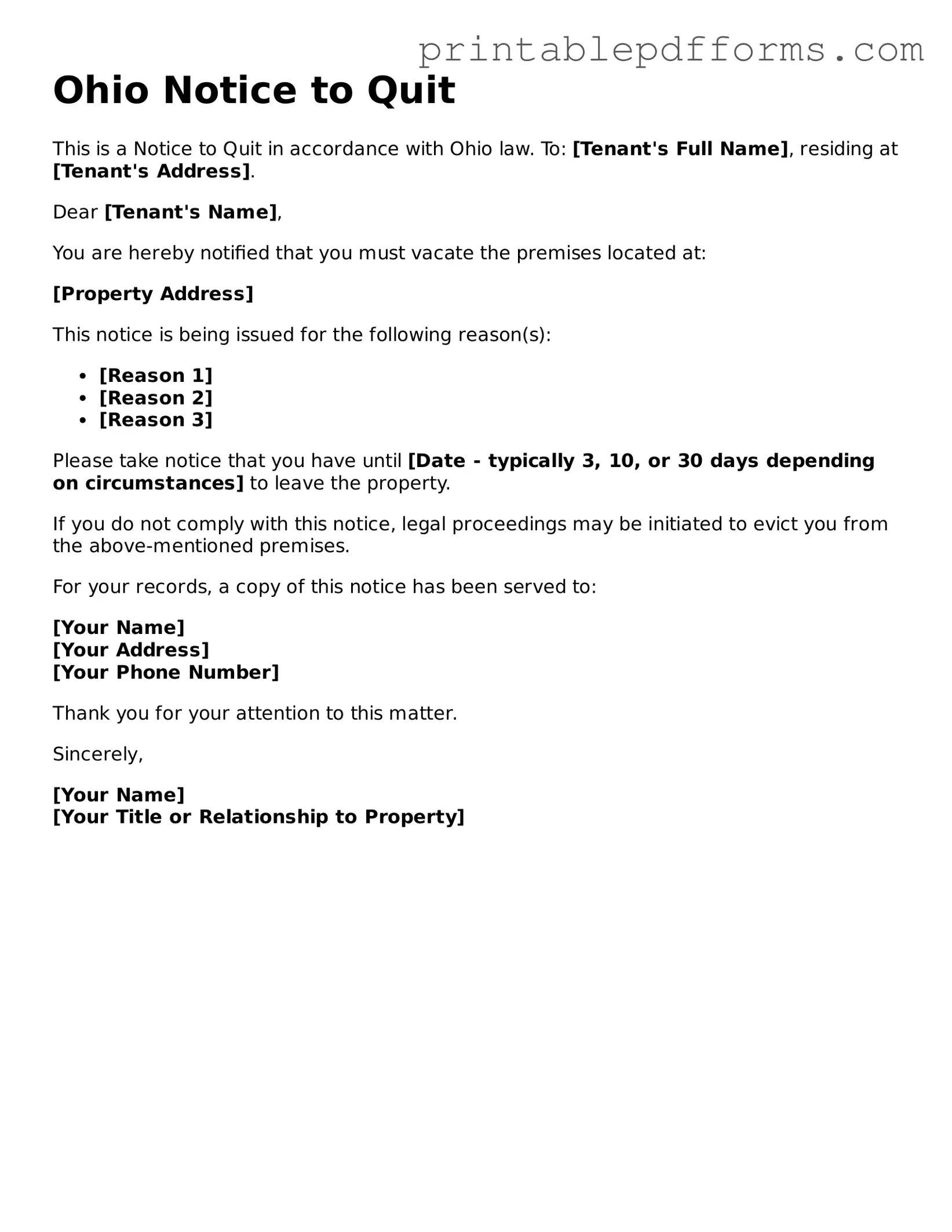The Ohio Notice to Quit form is a legal document used by landlords to inform tenants that they must vacate the rental property. This notice typically indicates the reason for eviction, such as non-payment of rent or lease violations, and provides a specific timeframe for the tenant to leave the premises.
When should a landlord use a Notice to Quit?
A landlord should use a Notice to Quit when they wish to terminate a tenancy due to specific reasons, including but not limited to:
-
Failure to pay rent
-
Violation of lease terms
-
Illegal activity on the premises
-
End of lease term without renewal
It is essential to follow the appropriate legal procedures before proceeding with eviction.
How much notice is required in Ohio?
The amount of notice required varies depending on the reason for eviction. Generally, the following timeframes apply:
-
For non-payment of rent: 3 days
-
For lease violations: 30 days
-
For month-to-month leases: 30 days
These timeframes may change based on specific circumstances, so it is crucial to consult local laws.
Can a tenant contest a Notice to Quit?
Yes, a tenant can contest a Notice to Quit. If a tenant believes the notice is unjustified, they can respond in writing or seek legal advice. If the dispute is not resolved, the landlord may file for eviction in court, where both parties can present their cases.
What happens after a Notice to Quit is served?
Once a Notice to Quit is served, the tenant has the specified notice period to vacate the property. If the tenant does not leave by the deadline, the landlord may proceed with filing an eviction lawsuit in the local court. This process may involve a hearing where both parties can present evidence.
Is a Notice to Quit required for all evictions in Ohio?
A Notice to Quit is generally required for most evictions in Ohio. However, in some cases, such as when a tenant engages in illegal activities, a landlord may not need to provide notice before initiating eviction proceedings. Understanding the specific circumstances is crucial.
How should a Notice to Quit be delivered?
A Notice to Quit can be delivered in several ways, including:
-
Handing it directly to the tenant
-
Mailing it to the tenant's last known address
-
Posting it on the rental property door
Proper delivery is essential to ensure the notice is legally effective.
A Notice to Quit should include the following details:
-
The tenant's name and address
-
The reason for eviction
-
The date the notice is served
-
The deadline for the tenant to vacate
-
The landlord's contact information
Providing clear and accurate information helps avoid confusion and potential legal issues.
Can a tenant negotiate after receiving a Notice to Quit?
Yes, tenants can negotiate with landlords after receiving a Notice to Quit. Communication may lead to an agreement, such as a payment plan for overdue rent or an extension of time to vacate. It is advisable for both parties to document any agreements in writing.
